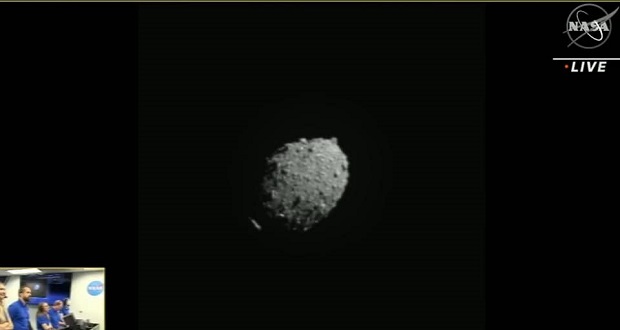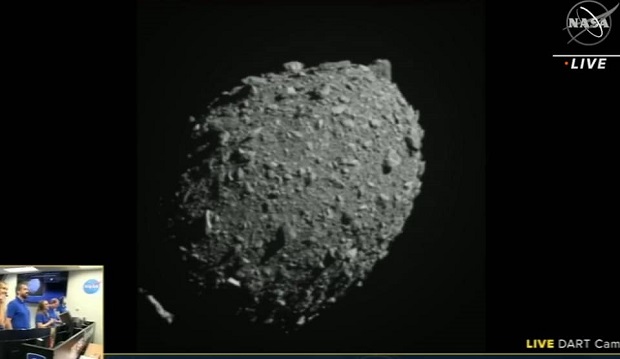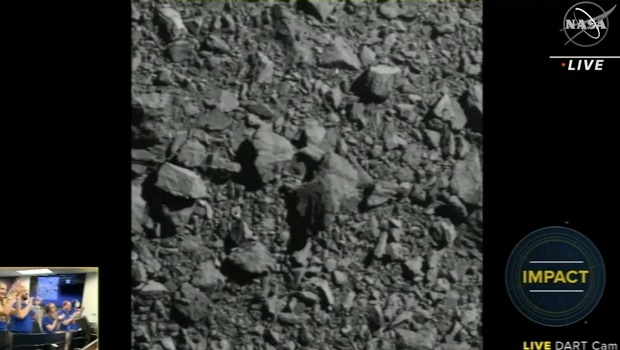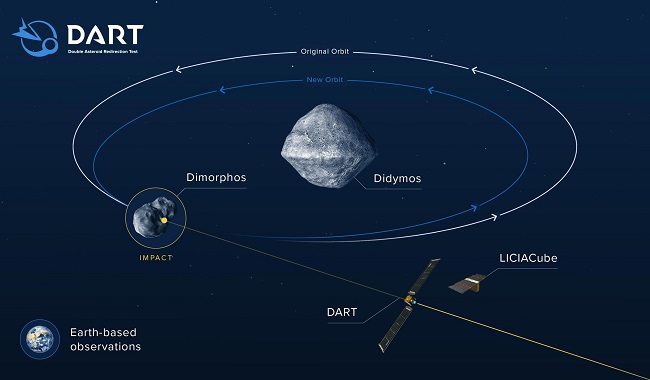
DART collides with asteroid Dimorph: How successful was NASA's mission?
The American aircraft DART successfully collided a few hours ago with the asteroid Dimorph at 24,000 km/h. The purpose of the mission was to test, for the first time, the possibility of protecting Earth from potentially dangerous space objects.
The DART probe (Double Asteroid Redirection Test) collided with the asteroid Dimorph at 7:15 p.m. EST (Sept. 27, 03:15 a.m., Yerevan time). The spacecraft was traveling at about 24,000 kilometers per hour at the time of the collision.
NASA showed exclusive footage taken by the DART camera just seconds before the impact:
IMPACT SUCCESS! Watch from #DARTMIssion’s DRACO Camera, as the vending machine-sized spacecraft successfully collides with asteroid Dimorphos, which is the size of a football stadium and poses no threat to Earth. pic.twitter.com/7bXipPkjWD
— NASA (@NASA) September 26, 2022

So, all we can say for now is that the collision took place, and both DART and the LICIACube mini-spacecraft that separated from it successfully accomplished their missions.
NASA officials welcomed the immediate test result, saying the spacecraft had achieved its goal.
"NASA works for the benefit of humanity, so for us it’s the ultimate fulfillment of our mission to do something like this - a technology demonstration that, who knows, someday could save our home," NASA Deputy Administrator Pam Melroy, a retired astronaut, said minutes after the impact.
NASA experts will now monitor Dimorph with ground-based telescopes to confirm that the impact of DART changed the asteroid's orbit around Didym. Researchers expect the impact to shorten Dimorph's orbit by about 1 percent, or about 10 minutes. Accurate measurement of the asteroid's deflection rate is one of the main goals of the full-scale tests.

In about four years, the European Space Agency's Hera project will conduct detailed studies of both Dimorph and Didim, focusing on the crater created by the DART impact and an accurate measurement of Dimorph's mass.

DART was launched last November from the U.S. Space Force's Vandenberg Base in California using a SpaceX Falcon 9 launch vehicle. During the last hours of its journey, control of the vehicle was transferred to an autonomous onboard navigation system.
The asteroid it crashed into posed no danger to Earth. The $330 million mission, which took about seven years to develop, was designed to determine whether the spacecraft could change the trajectory of the asteroid using kinetic force alone, knocking it off course just enough to keep Earth out of danger.

- Related News
- The end of the Universe: 3 plausible theories of a global apocalypse
- Mutated bacteria resistant to drugs found on the ISS: What does this mean and why is it a problem?
- 4 flares erupted from Sun in rare event: the Earth may be hit by geomagnetic storm (video)
- 11 incredible satellite photos published on Earth Day
- NASA shows all of Ingenuity's flight trajectories in one video
- Could life exist on Saturn's moon Enceladus?
- Most read
month
week
day
- Once in a lifetime phenomenon: This year we will observe a star explosion that occurred 3,000 years ago 938
- How DNA analysis helps to solve crimes and who can sell your DNA data and why: Interview with former FBI scientist Bruce Budowle 786
- Huge battery, IP68/IP69K and MIL-STD-810H certifications: Ulefone will present the Armor Pad 3 Pro tablet (photo) 774
- 5 original buildings with curious optical illusions (photos) 618
- What risks do crypto and digital currencies pose? Interview with Rasmus Nielsen 608
- How will new technologies change future of finance? Interview with director of Apricot Capital (video) 605
- Instead of destroying nearly 100,000 old iPhones, Canadian company sold them in China 597
- Metal roofs: What makes them a great choice for small homes? 597
- WhatsApp will get new and useful feature 561
- 4 flares erupted from Sun in rare event: the Earth may be hit by geomagnetic storm (video) 525
- Archive
